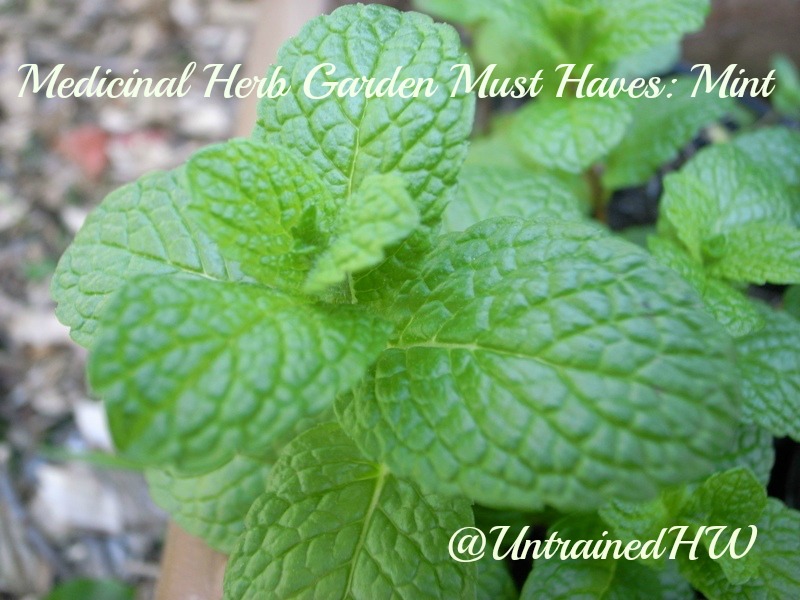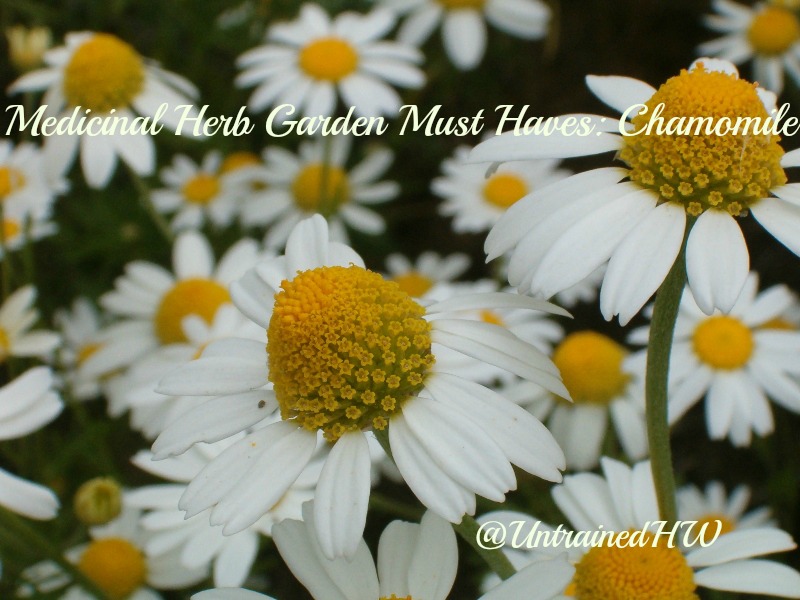Many medicinal herbs are easy to grow, and most of them can be used in both cooking and home remedies. Use herbs in teas and herbal infusions, in homemade herbal oils and salves, in herbal baths, and in home health&beauty treatments.
Calendula
Calendula (Calendula officinalis) is a traditional skin healing herb: it was already used in herbal medicine in medieval Europe. The orange and yellow flowers also brighten up any herb garden. Calendula is used topically in creams, salves, and lotions for skin inflammations, dry skin, irritated skin and different types of dermatitis, eczema and other skin problems, as well as diaper rash. Use calendula to make your own infused oils and herbal salves, add calendula petals to homemade tea blends, or use them to decorate salads.
Chamomile
Chamomile (Matricaria recutita) is good for skin problems, for the digestion, and for the nerves. There are two varieties — the German chamomile (Matricaria recutita) and the Roman chamomile (Chamaemelum nobile), but both are used for most of the same complaints. Make a chamomile infusion to relieve emotional stress and anxiety, or as a natural remedy for insomnia. I find it relieves PMS, but this is just my own experience.
Drink chamomile tea/infusion for digestive upsets, such as diarrhea or vomiting. Chamomile infusions may help children’s stomach upsets, diarrhea and colic. If you make your own herbal oils or salves, chamomile is a good herb for most skin problems including sensitive skin, eczema, and dermatitis.
Comfrey
Comfrey (Symphytum officinale) is a traditional remedy for bruises, muscle sprains and strains, and even arthritic joints. An infused comfrey oil or comfrey ointment is often used for these purposes. Comfrey oil is good for aching muscles and joints, and it can be used in your homemade massage blends for a post-exercise, pain relieving oil.
There has been some controversy about comfrey. In the US, the FDA does not approve orally taken comfrey products due to concern about substances that are toxic to the liver. However, comfrey is used widely in homemade herbal oils and ointments, poultices, creams, liniments and oils.

Mint and Peppermint
Mint is easy to grow in the garden or on the windowsill. Mint and peppermint are natural digestive aids; drink mint or peppermint tea after a heavy meal to help digestion. Peppermint (Mentha piperita) is a popular home remedy for indigestion, nausea and flatulence. Mint and peppermint infusions are great in hot weather for cooling down, and hot mint/peppermint tea is a good home remedy for a cold or for a sore throat.
Aloe Vera
Maybe it’s not exactly an herb, but an aloe plant (Aloe vera) probably should be in your medicinal garden. The gel inside its leaves has been used for centuries to treat burns, skin infections and other skin conditions. Aloe is a natural first aid treatment for sunburns and other types of burns – apply it directly on the burn, and keep reapplying several times a day. According to this Mayo Clinic online article on aloe vera, early studies have shown that aloe gel, when applied topically (on the skin) may improve skin inflammation and wound healing. Something that has been known for centuries in natural medicine. To use aloe, slice one leaf lengthwise to get to the gel inside. Not recommended on open wounds.
Sage
An infusion of sage (Salvia officinalis) is one of the best home remedies for a sore, irritated throat. Red sage is especially good for the throat. Make an infusion and drink several cups a day, or use it to gargle your throat. Sage is not recommended as a home remedy for pregnant women. When used in cooking, sage helps to improve digestion.
Lavender
What can you not use lavender for? Lavender (Lavandula angustifolia/officinalis) infusion helps with sleeping problems, stress and headaches. Lavender flowers can be used in baths to relax achy muscles or to promote general relaxation, and of course lavender looks and smells beautiful.
There are many more herbs to add to a medicinal herb garden, and many of these you can use in every day cooking, too: marjoram, thyme and rosemary are the first to come to mind. Which medicinal herbs do you grow? How do you use them?
Sources:
University of Maryland Medical Center’s Medical Alternative Medicine Index
A good general reference herbal book is The Complete Book of Herbs: A Practical Guide to Growing and Using Herbs by Lesley Bremness.
Photos:
Chamomile: morguefile.com
Mint: morguefile.com






